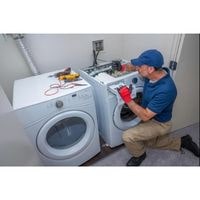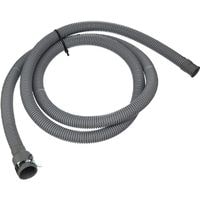Front load washer leaking. Most front-load washing machines will use approximately 2-5 gallons of water in each fill cycle.
Unfortunately, most of these washing machine leaks are hard to find and fix because of their location under the washer.
We recommend calling a trained, trustworthy professional for leak detection in order to quickly identify and get rid of the problem before your new expensive leather couch is 6 inches deep in water.
Front-load washer leaking

If your clothes don’t smell as fresh as they should, check the washer. Over-loading the washer or unbalancing its load can cause it to leak. If a leak develops, unplug and drain the machine and overlap the door seal with a folded cloth. If there is still a leak, call a service technician to repair it.
As soon as possible, determine where exactly the leak is coming from so then you know how to fix it.
Drain Hose problem

Sometimes a hose can be the source of a leak as well. A typical scenario involving the hose drain pump is that it will develop a leak between the end of the pump and the hole in which is it situated on the rear inner rear panel of your washer.
The drain hose could also split if you push your washer too close to a wall and the back panel, where this location leaks instead quickly anyways, causing friction on an easy to access portion of your appliance.
The vibration that occurs while your washer is running then accelerates this kind of frictional erosion by cracking or splitting your hoses.
Drain Pump issue
After the initial wash cycle and again after the rinse cycle, the washing machine’s control sends voltage to the drain pump which pumps water out of the washer’s tub through a drain hose.
The pump pushes water directly into the drain line or indirectly through a drainage system through what’s known as an external pump that is connected to a manifold drain network.
Over time, the pump can wear out or even break, causing it to leak, and pouring water onto your floors. To fix this issue, you will need to replace it with a new one before more damage is done.
Tub-To-Pump Hose fault
if the hose running from the washer tub to the drain pump has a hole in it or is worn and torn, you should replace it with a new one.
Don’t try to fix this problem by cutting off the dry-rotted hunk of the hose and spending time and money fixing up an old piece of rubber. A new, unblemished part will give you better, more consistent performance and last longer.
The strain put on even a half-working hose can cause another rupture so make sure to just get another replacement instead.
Water Inlet Valve Not Working

The water inlet valve is the component that controls the amount of water entering the tub during the fill and rinse cycles.
As you will notice, during a cycle, the inner tub begins to fill up with water through the overflow pipe, and at this point in time, the inlet valve should close to prevent overfilling of your bathtub.
If you happen to be experiencing an overflow problem and/or an improper performance of your Sterling bathtub overflow assembly or other related issues.
It’s best if you shut off your power supply at its source during any given cycle so as to observe whether or not your Sterling overflow assembly continues filling up with water if it does fill up with water.
Water Pressure Low
To operate properly, your washer’s water inlet valve may require 20 to 120 pounds per square inch of water pressure; however, if your home’s water pressure is too low.
The valve will not fully close after the incoming voltage has ended, causing it to continuously fill with water until it overflows.
Overflowing or leaking washer tubs are less likely to be caused by this type of problem, though you should always make sure that your washer receives adequate water pressure before replacing any parts.
Defective Pressure Switch
Clogged or damaged air tubes can result in dangerous malfunctions and should be inspected before you decide to replace a faulty pressure switch.
It’s likely that changes in temperature or pressure can result in damage over time, which may prevent the air tube from functioning properly.
This results in your bathtub continuing to fill with water even when it reaches its maximum allowable level. Install both a drain plug and an anti-scald device for extra protection against overflow accidents.
Door boot seal damaged
This component helps create a seal that prevents water from leaking out of the washer while it is being operated. If you notice that water is leaking through the front of your machine.
Check to see if the door boot seal (that large rubber piece on the edge of your loading door) has been torn or damaged and replaced if necessary.
You should also be sure that both the retaining spring on the rear of the seal and the retainer ring securing it to the front panel are in place and not loose or damaged.
Broken recirculation tube in the boot seal
When excess detergent results in too much suds, it can interfere with the water entering and exiting from the washtub. To assist in water flow, some front-load washers are equipped with a recirculation tube.
The tube connects to a pump that forces additional water through the recirculation tube into the washtub this helps remove soapy residue to help prevent Sudsing during future wash cycles.
If not installed correctly, over time spalling could wear away enough tubing to cause it to leak or break completely and allow water to leak down into the front frame area below.
Front load washer leaking
Related Guides
